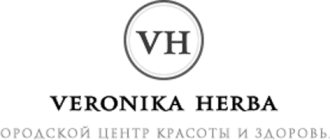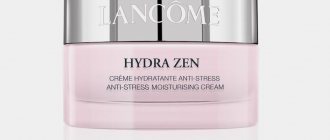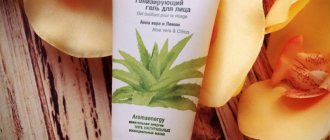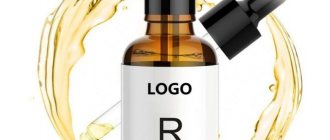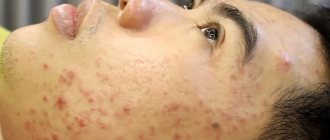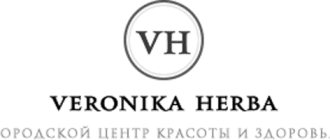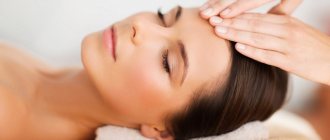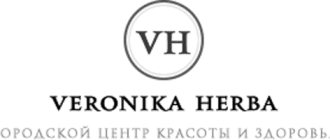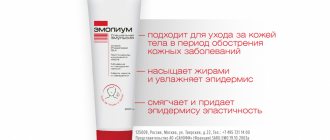To ensure that your face retains freshness and a healthy glow for many years, you can use natural preparations to care for it. Virgin vegetable oils are an excellent alternative to store-bought creams, lotions and tonics. They can be used not only to moisturize and nourish the skin, but also to effectively cleanse it.
There is a traditional way to cleanse and remove makeup using face oil at home. In this case, the oil product is applied to a damp cotton pad and rubbed over the face along the massage lines in the evenings. But there is a more effective way - cleansing the face with oil to get rid of acne, comedones, moisturize, protect and soften the skin of the face and neck, especially in the cold season.
Oil Cleansing Facial: Pros and Cons of the Oil Cleansing Method
This procedure is quite popular due to its simplicity, accessibility and excellent cleansing effect. The first to try this method were the Japanese, after which Europeans also appreciated all the benefits of cleansing their faces with oil.
Before you apply this method on yourself, it’s still a good idea to learn about all its pros and cons:
Benefits of using facial cleansing oils:
- Naturalness. Vegetable oils are used without adding flavors, preservatives and surfactants.
- The procedure is equally useful for any type of epidermis: normal, combination, oily, dry or age-related. It is recommended to use oil to cleanse the face for problems such as pimples, acne, inflammation, pigmentation, dryness, flaking, etc.
- The method is good for cleansing your face every day and for removing makeup at home (suitable even for long-lasting cosmetics).
- The procedure does not harm the natural lipid layer of the skin and does not cause a feeling of tightness. In addition, it helps to tighten the oval of the face, improve blood circulation and produce its own collagen.
- By systematically cleansing your face with oil, you can achieve a rejuvenating effect, make your skin more hydrated and elastic, and your complexion more even.
Possible inconveniences from using oils to cleanse the face:
- The skin will not immediately be able to get used to such cleansing. Often at first you can observe the appearance of acne, redness and oily sheen. The adaptation period takes approximately 7-10 days, after which waste and toxins are removed.
- Time factor. Cleansing with industrially produced gels and foams usually takes less time than cleansing the facial skin with natural oils.
- Consumables. Towels and napkins that must be washed after each procedure.
Cleansing the skin with oil - advantages and disadvantages
What is good about this kind of cleansing?
- It is suitable for all skin types, oil cleansing is suitable for acne-prone skin, the skin gets rid of dryness and gains radiance and shine.
- In addition to cleansing the skin, the oil mixture can be used to remove makeup.
- With this cleansing, we do not deprive our skin of its own protective layer.
What inconvenience does cleansing our skin with oil bring us?
- The skin will not immediately get used to such a procedure.
- It will take a little longer to cleanse.
- Towels will need to be changed more often as oil does not help them last long.
Oil cleansing: how does it work?
Until now, this fairly popular and effective method causes mistrust. But the main idea is that one oil (or vegetable fat) should dissolve another fat (skin fat, which accumulates on the face).
Natural oil that cleanses the skin of the face, penetrates the pores and dissolves the dirt, sebum, and cosmetics accumulated in them. After which, opening the pores makes it possible to easily remove all this unpleasant mixture. And in order to provide the epidermis with the nutrition and protection it needs, you can use an additional couple of drops of the oil product.
Natural plant extracts contain vitamins, minerals and fatty acids, which not only cleanse the skin, but also nourish, soften, rejuvenate, maintain its health, without causing acne and inflammation.
Choosing an oil for cleansing your face
Oil cleansing compositions usually consist of 2 parts:
- cleansing oil - usually castor oil (sometimes hazelnut);
- nourishing – olive, macadamia, avocado, borage, jojoba, etc.
Castor oil has a thick texture, so most often a mixture of two or more oils is used for washing and cleansing. So, for example, if you use the most accessible and simple olive oil as a nutrient, then:
- for an oily type of epidermis, you need more castor oil for cleansing and less olive oil for nutrition, that is, 75% castor oil and 25% olive;
- and for dry, on the contrary, you need more nutrition, that is, 75% olive and 25% castor oil.
Olive extract has a large amount of antioxidants in its composition, and castor extract is excellent for healing, cleansing, and whitening the skin. In addition, castor oil is good at drawing out dirt from skin pores and is low comedogenic.
For information
It is important to remember that castor oil cannot be used in its pure form, so as not to dry out the epidermis. The usual proportion is: 1/3 nourishing oil to 2/3 castor oil.
Oil mixtures depending on skin type
In order to find out what is the best way to cleanse your face every day, you will have to use trial and error to find out which oil product and in what proportion are suitable for a specific type of epidermis. To make the choice easier, there are some starting points depending on your skin type, like this:
- For oily types, you need 1/3 nourishing and 2/3 cleansing oil.
- Under normal conditions, this ratio will be 1:1.
- For dry skin, the ideal proportion would be: 1/3 cleanser and 2/3 nourishing oil (but for overly dry skin, it is better to add a very small amount of cleansing oil to the mixture).
Further, while there is no clarity with the composition and proportion, you can mix a small amount of oil extracts, for example, a teaspoon of one and the other. Subsequently, when you understand what a specific skin type needs, these ratios can be changed, adding, for example, more nutrients in the cold season or in windy weather.
In addition, in oil mixtures for cleansing, it is permissible to use esters as additives, which are also suitable for the type of epidermis:
- lemon, bergamot, orange - for normal;
- rosemary, tea tree, fir and lavender - for oily;
- rose and neroli - for dry;
- geranium, sandalwood, incense, fennel, myrrh and patchouli - for aging skin.
Specially selected mixtures for eliminating various problems with the epidermis are considered especially effective:
- For the treatment of pimples, inflammation and acne: castor oil + flax + almond + jojoba.
- Regulating the functioning of the sebaceous glands, getting rid of flaking: sesame seeds + sunflower + corn.
- To eliminate skin tightness and flaking: cocoa + wheat germ + grape seeds + walnuts.
- Anti-aging effect, anti-wrinkle, tightening: apricot kernels + avocado + argan.
Nourishing oils for facial cleansing
Depending on the properties and type of skin, which oil cleanses and nourishes the skin?
- Oily and problematic: jojoba, grape, sweet almond.
- Dry and fading: avocado, apricot and argan.
- All types, universal: almond, grapeseed, sunflower, tamanu, apricot, olive and jojoba.
It is worth considering that if the skin is prone to clogged pores and the formation of comedones (blackheads), then in this case it is better to use oil extracts that have a low degree of comedogenicity (sunflower, shea butter, hemp, black cumin). Rosehip, almond, apricot and grape seed oils, and castor oil are slightly more comedogenic. But you should be more careful with the squeezes of flax seeds, coconuts and wheat germ - they have the highest threshold for their ability to clog pores.
Advice
But the surest way is to observe the reaction of your own skin and, if the oil product is not suitable, simply change it to another.
Sometimes such a reaction can occur to castor oil; in some people it can cause drying of the epidermis. In this case, you can try replacing castor oil with:
- sunflower or hazelnut – for problem types prone to acne;
- grape or almond – for normal and fatty types;
- peach or jojoba - for epidermis prone to dryness;
- apricot and avocado - for very dry skin.
If the cleansing mixture causes redness, this may indicate an allergic reaction to one of the oil products included in the composition. Typically, oils from nuts (macadamia, hazelnut, almond, etc.) have allergenic properties. When faced with such a problem, next time you can try replacing this type of oil products with extracts of grape or apricot seeds or sunflower.
On a note
If you are prone to allergies, it is worth remembering that the greater the number of oil extracts a mixture contains, the more difficult it is to calculate which of them caused a negative reaction.
Hydrophilic oil biore. Biore Cleansing Oil.
I ordered Biore Cleansing Oil hydrophilic oil last spring, having read a lot of positive reviews about it, but the package was stuck in transit for several months. During this time, I managed to order and receive an alternative makeup remover, which I really liked and it took a very long time to use, so the turn for Biore Cleansing Oil came only this year.
Biore Cleansing Oil is a liquid, oily water with the aroma of a chemical apple. In terms of texture, this is not an oil in its usual form, but rather more reminiscent of two-phase makeup removers, not greasy and light. The aroma is unpleasant, but not strong. This oil should be applied to dry skin with makeup and massaged, then add water to foam and massage for some more time, after which you need to rinse with water and wash again with cleanser. The manufacturer promises that this oil deeply cleanses pores, removes multi-layered makeup, and even dissolves waterproof mascara.
I apply 4 pumps of oil (as per instructions) to dry skin, massage for a couple of minutes, add water and massage for another couple of minutes and rinse with water. An oil film remains on the skin, which then needs to be washed off, but none of my cleansers completely washes off this oil, I have to use a harsher product in the form of soap, or the oil instantly clogs the pores and causes inflammation. It would seem that after such a procedure the skin should be perfectly clean, but in fact you have to come back to cleanse the skin of makeup again with micellar water, since oil does not completely remove makeup. I don’t use any very long-lasting cosmetics, especially waterproof ones, but in fact this oil does not completely cope with either the light Dioeskin Nude foundation, or Maybelline cream shadows, or even L’Oreal fluid lipstick, not to mention mascara . Moreover, it is unpleasant to wash off makeup from the eyes with this oil; even after several washes, there is a veil over the eyes, and if the oil gets even a little on the mucous membrane of the eyes, it will burn strongly, but the makeup will not be completely washed off. Ingredients: Mineral Oil, PEG-12 LAURATE, Isododecane, Water, Isopropyl Palmitate, Synthetic ester, Cyclopentasiloxane, Polyglyceryl-2 isostearate, Decyl Glucoside, Polysorbate 85, Isostearic Acid, Isostearyl Glyceryl Ether, Isostearyl glyceryl pentaerythrityl ether, Myristyl alcohol, Alcohol, Citric Acid, Phosphoric acid, BHT, Fragrance, Tocopherol, Gyceryl.
Biore Cleansing Oil hydrophilic oil has become my disappointment product of the year; it not only removes makeup poorly, but is also difficult to wash off and causes clogged pores. I don’t even know whether it’s the quality of this particular oil or whether hydrophilic oils are simply not suitable for my skin type, but my disappointment knows no bounds and I have no desire to try other similar products. For myself, I don’t see the point in chasing hydrophilic oil if any makeup can be removed in the same way using makeup remover milk or any base oil. For me, the extra step in washing off hydrophilic oil is a very serious drawback, especially since there is a wonderful product that removes makeup immediately and does not require additional re-washing with anything else.
Volume: 150ml.
Oil cleansing procedure
General recommendations for carrying out the procedure are given below, but it must be taken into account that each person is unique and it may happen that over time they will develop their own methodology for conducting cleansing sessions with natural remedies. It is better to cleanse your face with oil in the evening.
- Apply a mixture of two or more oils to a dry face over makeup, massage in circular motions for 1-2 minutes to allow the oil to begin to work. Leave it to act for another 30 seconds.
- Soak a terry towel or napkin in hot (not scalding) water and place it on your face to create a steam effect and open the pores. After 10-30 seconds, repeat the procedure, wringing and rinsing the napkin in water 2-3 times.
- Rinse the towel one last time in hot water and wring it out to remove any remaining oil and dirt from your face. Some people use boiled water for this.
- Spray cool water on your face to close your pores. If you feel the need, you can apply your usual cream.
- If after the session you feel dryness and tightness of the epidermis, you should reduce the amount of cleansing oil in the wash mixture. In addition, to get rid of dryness, it’s a good idea to apply a few drops of the oil mixture to your fingertips, warm it up, rub it between your palms and massage it into damp skin. Perform a light massage until the oil film disappears.
- In the morning, just wash your face with clean warm water or pat your face with a warm, damp cloth.
Important!
This method of cleansing the face with oil may not be suitable for very sensitive skin, and manipulation with a hot towel is contraindicated for rosacea (vascular network).
Washing procedures with oil preparations should be carried out no more than 1-2 times per week. and use moisturizers. Oils do not contain water, so it is easy to dry out the skin by overusing such procedures.
Consequences
If the skin has already become dry, and after washing there is a constant feeling of tightness, you should stop using the oil on an ongoing basis and consult a dermatologist. Normal moisturized skin does not show itself in any way if no care product has been applied - it is simply unnoticeable. If you experience significant discomfort after washing your face, you need to reconsider how to moisturize your skin.
Recommendations and important notes about the oil washing method
Each person is unique, so it is impossible to say for sure how many times a week to do oil cleansing: for some, a couple of times every seven days is enough, but for others, there is a need to carry out the procedures daily. If you begin to feel unusual dryness of the skin, then the sessions are carried out too often.
- It is necessary to take into account that the skin requires adaptation (about a couple of weeks); there is no need to use gels, foams, or industrial soaps during this period - this will not only increase the adaptation time, but can also harm the epidermis.
- You should not use baby oil to remove makeup; this is a mineral oil product - a petroleum product that covers the skin with a film and prevents it from breathing.
- It is imperative to test oil preparations before use on a small area of skin for sensitivity.
- Another necessary condition is the quality of the ingredients; you must carefully choose the place of purchase, use unrefined, first cold-pressed preparations, without preservatives, flavors and additives.
- If a month after the sessions you suffer from acne, perhaps one of the components has clogged the pores, it could be olive or coconut oil, then you need to change the composition of the mixture.
- Wash towels and napkins used in the procedure frequently to avoid the accumulation of bacteria. Do this without using fabric conditioners or fabric softeners.
- Drink clean water in sufficient quantities!
